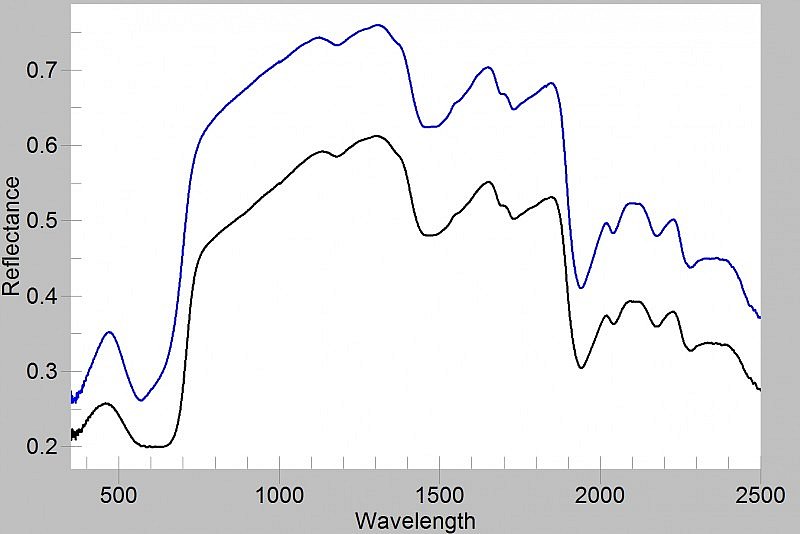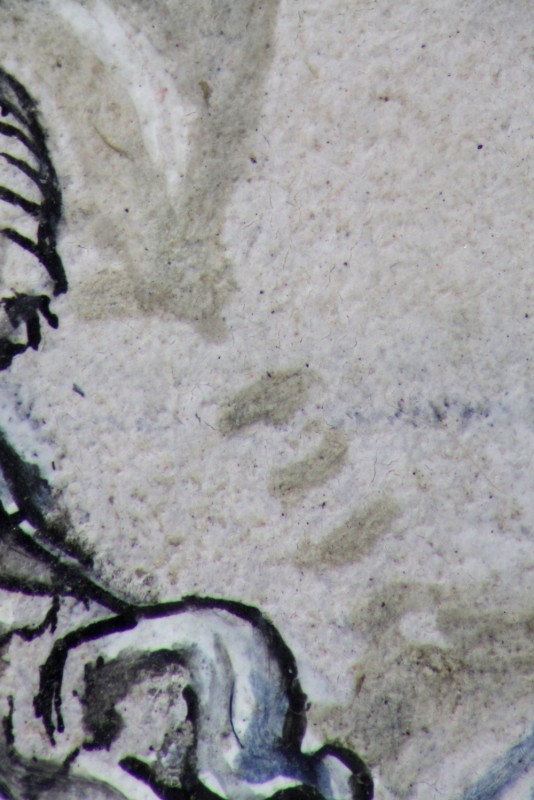Differences in palette
Artists' Materials
Despite the overall homogeneity of the palette, a few differences are apparent between the pigments favoured by different artists. Notably, Hand A did not use vermilion, which other artists mixed in some of the ‘rusty’ red draperies and which Hand B also used to paint red highlights on the cheeks of his figures. Hand B used ultramarine for shading white areas, while Hand C shaded them with indigo. Hand D used a mixture of ultramarine, organic red and lead white, shaded with indigo, to obtain a purple-grey colour which sets him apart from his colleagues.




Deposition (Hours of the Virgin, Vespers)
The deep blue and dark purple draperies (hotspot 1), skilfully modelled so as to convey the three-dimensional human anatomy beneath, and the pink flesh tones of Christ’s body (hotspots 2 and 3) characterise the work of Hand D.